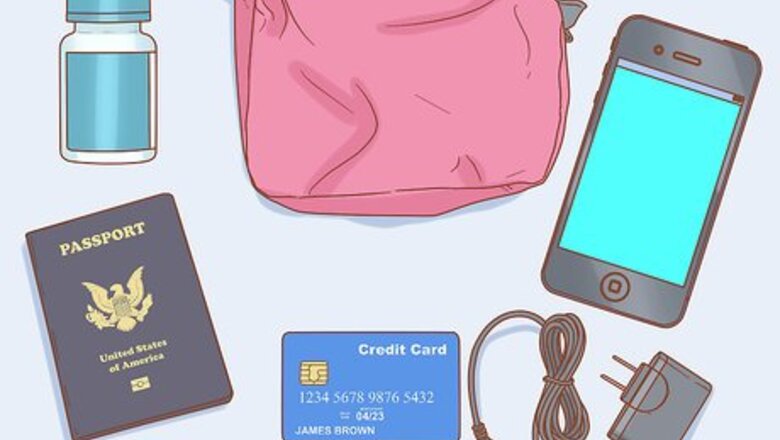
views
X
Trustworthy Source
Federal Aviation Administration
U.S. government agency responsible for monitoring and setting guidelines for civilian aviation
Go to source
While air travel is one of the safest modes of transportation available, you may feel anxious about being in an airplane. Luckily, there are several easy ways to reduce your nervousness and ensure you do everything in your power to have a safe flight.
Preparing for the Flight
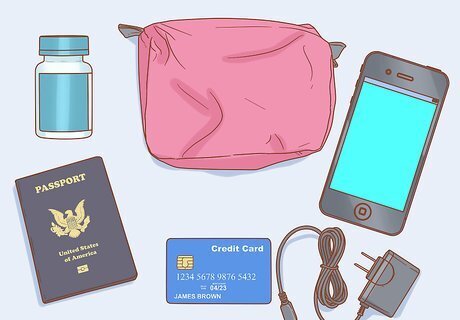
Create a mini emergency bag. Choose a small bag you can wear on your person, like a crossbody bag or fanny pack, instead of sticking the items in your purse or carry-on—you won't be able to grab your bag in the event of a true emergency. Items to include in your travel wallet are: Passports and identification cards Cash, credit cards, and/or travelers' checks Information for your emergency contact Cell phone and charger Medications you need to take each day
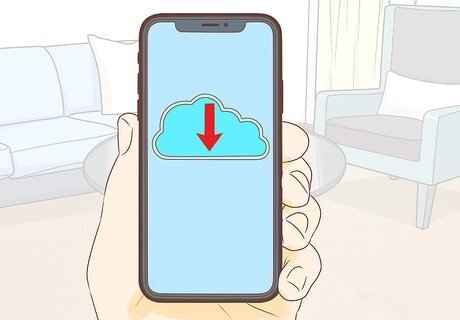
Prep your electronic gadgets. Backup your phone, laptop, and other electronic devices that you plan to take on your flight. In the event something happens to any of your devices, all of your data will be safely stored for access when you get home. If your electronic device offers a “find my device” feature, consider turning it on for the duration of your trip.
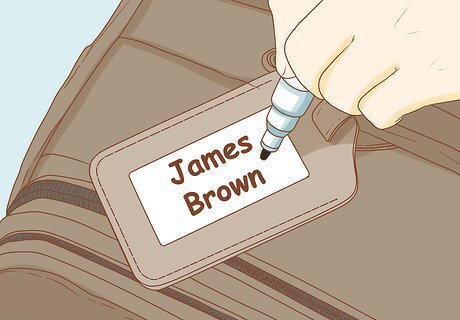
Tag all of your bags and luggage. Make sure your name and contact information are listed on all your bags. Create an email address that you can use on all bag tags to avoid having to divulge any personal information.Tip: To make your bags easily distinguishable from other travelers' luggage, add a marker such as a patterned luggage tag or strap or a brightly-colored ribbon.
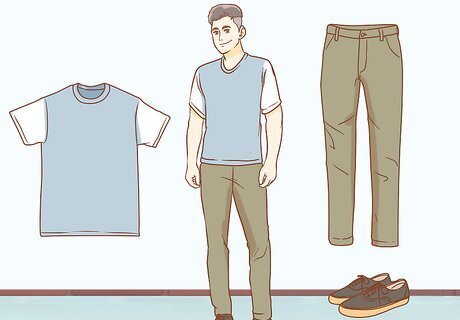
Wear comfortable clothing and close-toed shoes. In-flight comfort can help reduce your nervousness when traveling by plane. The clothing you decide to wear can also go a long way to ensuring our safety while flying. When planning your flight attire, keep in mind to: Wear clothing that allows for easy movement. Avoid tight or restrictive outfits that prohibit your range of motion. Choose pants instead of shorts. Pants will help keep you protected from slide burn in case there is an evacuation. Avoid high heels, sandals, or open-toed shoes. Wearing sneakers or loafers are the best choices for footwear since they are easily adaptable to any situation. Heels or sandals would also need to be taken off in the event of an evacuation, which will leave your feet vulnerable to injury. Leave jewelry in your checked bag or at home. Displaying valuable items can attract unwanted attention and is not recommended.
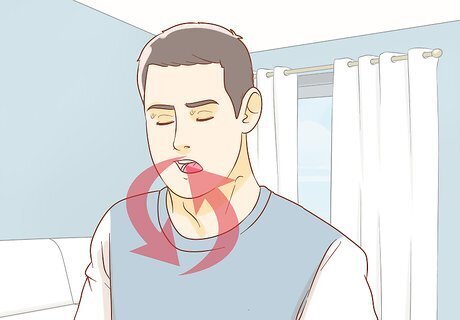
Take steps to overcome a fear of flying. People who are afraid of flying tend to feel most anxious during the time leading up to the flight itself. To combat your nervousness, spend time learning about how a plane operates, airplane safety regulations, the effects of turbulence, and so on. You can also try out various techniques to reduce your anxiety, such as: Deep breathing Mindful meditation Distracting yourself
Following Safety Protocol During the Flight
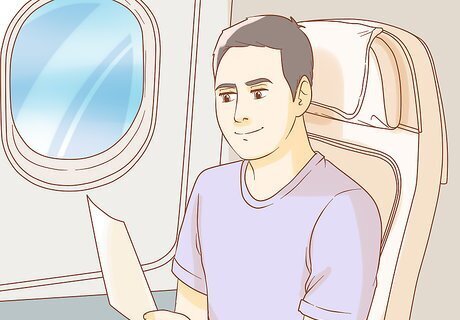
Review the passenger safety information. Check the pocket on the seat in front of you for the flight’s safety information card. Take a few minutes to review the information while you are waiting for take-off. Flight safety cards will contain step by step details on what to do in the event of an in-flight emergency. Special instructions for passengers with special needs will also be included.
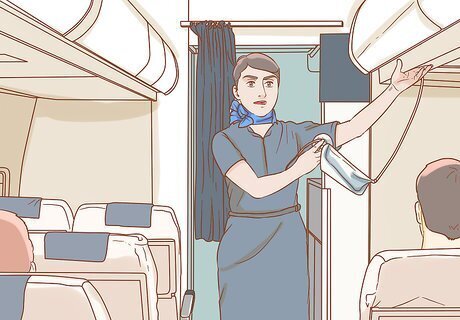
Pay attention to the flight safety briefing. Before the plane taxis for take-off, the flight attendants will perform a mandatory safety briefing that explains all safety procedures and reviews the information on the flight safety card. They will also demonstrate how to use oxygen masks and flotation devices, and point out the emergency exit rows. Be sure to check for all necessary safety gear, including the life jacket under your seat.
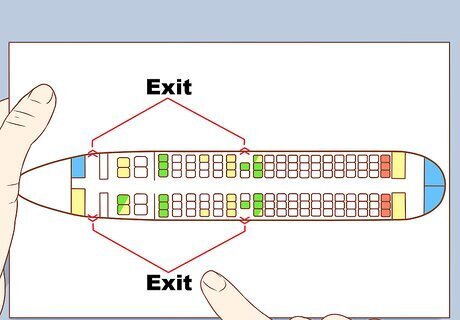
Understand the exit row responsibilities. If you find you have been seated in an exit row, read all of the instructions on what to do in the event of an emergency exit. Don’t hesitate to ask your flight attendants if you have any questions on what is expected of you as an exit row passenger. Exit row procedures are also discussed during the flight attendant briefing.
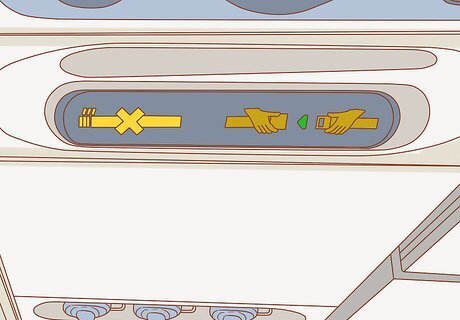
Follow all in-flight directions. During your flight, the flight attendants and captain will communicate with you as necessary. Alerts will include announcements on when it's safe to walk in the cabin, when to fasten your safety belt, and when to prepare for turbulence. Always follow these instructions and ask the flight attendants if you have any questions. Be sure to stow your luggage properly, turn off your electronic devices when instructed, and only use your tray table or put your seat back when allowed.
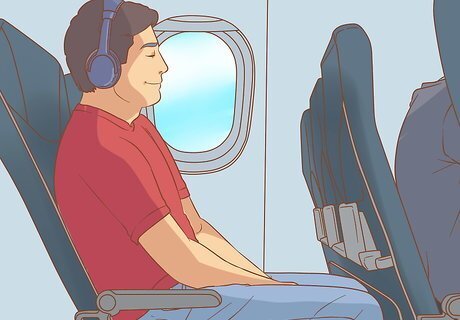
Remain calm during turbulence. Everyone who flies will experience turbulence at one point or another. While it can be an unsettling feeling, it’s a common occurrence that your flight crew is trained to handle. If you find it difficult to relax, try closing your eyes and listening to music through headphones until the turbulence subsides.
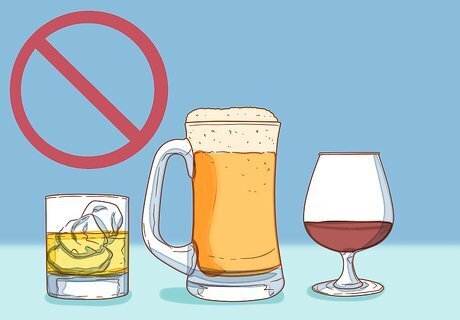
Avoid drinking before or during your flight. While you may be tempted to hit the airport bar or enjoy a cocktail on the plane, it's best to abstain from alcohol. Not only does alcohol dehydrate you, but it can also lower your inhibitions and slow down your response time. In case of an emergency, it's best to be sober.
Dealing with Emergencies
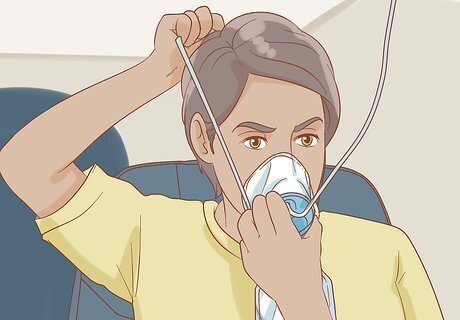
Secure your own safety gear before helping others. If you need to use an oxygen mask, put yours on before helping your traveling companions or other passengers. Similarly, find your life jacket before helping others find theirs. This is true if you're traveling with your children as well—you won't be able to make sure they're safe if you're not safe yourself.Warning: Avoid inflating your life jacket inside the aircraft. Wait until you have exited the plane.
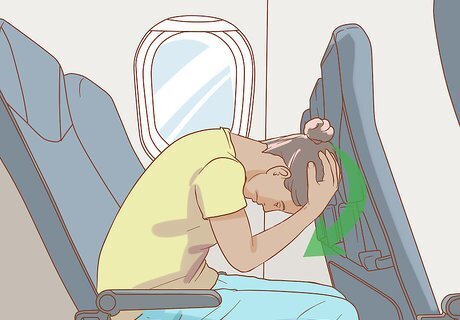
Brace yourself for impact in the event of an emergency landing. If something does go wrong and the plane has to land—or is going to crash—stow your tray table and put your seat back in the upright position. Lean over your knees and cover your head with your hands. Try to keep your knees and feet as far away from the seat in front of you as you can.
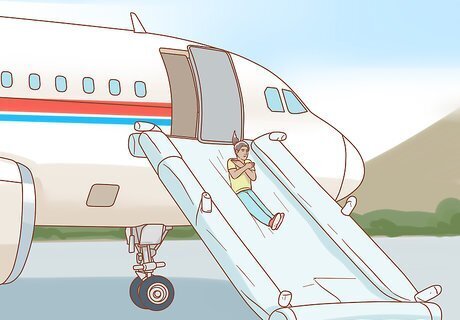
Exit the plane if instructed or necessary. In rare cases, you may need to get away from the plane after an emergency or crash landing. In these circumstances, you'll need to use the emergency slide exits. Fold your arms across your chest, slightly lean forward, and jump feet first. Leave all of your belongings on the plane. Do not waste time trying to reach your carry-on luggage.













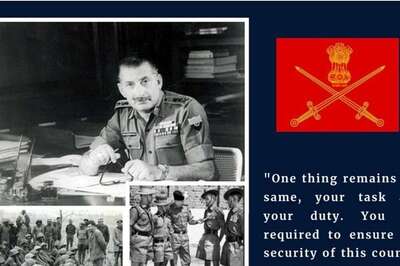

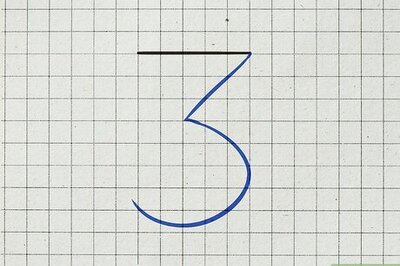




Comments
0 comment